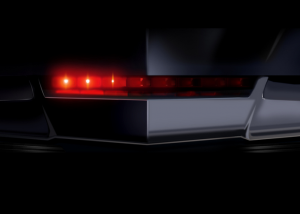Rise of the Robot Cars

Can you envision a world where cars drive themselves and "drivers" around, even those who are impaired, can sit back and enjoy a very safe ride? Sound like something out of a science fiction movie? Get ready to be amazed! This year, four brands will begin selling vehicles with the ability to drive themselves in heavy traffic, and experts estimate that by 2032, 10 million fully self-driving cars will be shipped annually. This technology promises to significantly reduce accidents, save time, money and fuel while alleviating traffic congestion and the resultant additional pollution. Research tells us that fully driverless cars are less than a decade from reality and that half of all new cars within 20 years will have complete robotic capabilities.
Of course, if you have shopped for a new vehicle recently, you likely realize how much technology has changed, and is continuing to change vehicles and driving. Parking assist, lane-keeping, back-up cameras and back-up collision avoidance technologies are becoming standard on many vehicles. Traction control and antilock brakes have been around for over a decade; these are some of the first technologies introduced that actually take control of the vehicle in certain situations. Television commercials for Infinity show us that accident avoidance is already being built into these cars; the Nissan and Infinity groups have been champions of driverless car technology.
Google has long been at the forefront of the research and development of robot cars; pioneers of the robotic vehicle technology from Stanford University, including Sebastian Thrun, are onboard and a huge part of pushing practical applications forward. Clearly the most visible with its fleet of cars emblazoned with "Google" and "self-driving car" badges, Google is also responsible for creating the complex software, Google Chauffeur, that enables the various sensors to work together. In Mountain View, California, it is common to see several driverless cars tooling around town near Google's headquarters, or being refueled by human at area gas stations. In more than half a million miles of testing, the cars have proven to be safe and the technology sound.
Of course, there are still obstacles to self-driving cars going mainstream. Currently, only three states permit them on public roads; Nevada was first, followed by Florida and California. Affordability is the other major concern, but that will become less of an issue, and very quickly. As Dominique Bonte from ABI points out, "The benefits of autonomous vehicles in terms of safety, cost savings, efficiency, and positive impact on the economy, are driving research and development efforts globally."
The latest advances are already being incorporated into some of today's vehicles. Four luxury auto manufacturers (Audi, BMW, Mercedes and Volvo) now offer models that have the needed equipment and software to enable the vehicle to drive itself at intervals. Called Traffic Jam Assist, the system handles braking, accelerating and steering for you by tracking the car ahead of you. It works in heavy traffic and with speeds up to 37 miles an hour. Alternately, Cadillac will soon begin selling vehicles equipped with its Super Cruise system which will make freeway driving a breeze; it automates freeway driving by keeping your car within its lane and adjusting your speed to traffic around you. This technology is not only for luxury car buyers. Tesla Motors plans mostly autonomous car within three years. Ford has said it will be selling semi-autonomous vehicles by 2017, and Nissan has promised affordable autonomous vehicles by 2020.
Isn't it an exciting time to be a driver? If you are like me and cannot wait for the technology to come to a dealer showrooms, you will be happy to know that RobotShop carries some of the core pieces of this technology, such as LIDAR, which helps detect and avoid obstacles so that the vehicles can safely navigate. If you are technically able, you can have tomorrow's technology in your garage today!
Thanks for helping to keep our community civil!
Notify staff privately
You flagged this as spam. Undo flag.Flag Post
It's Spam
This post is an advertisement, or vandalism. It is not useful or relevant to the current topic.
This post is an advertisement, or vandalism. It is not useful or relevant to the current topic.
You flagged this as spam. Undo flag.Flag Post



